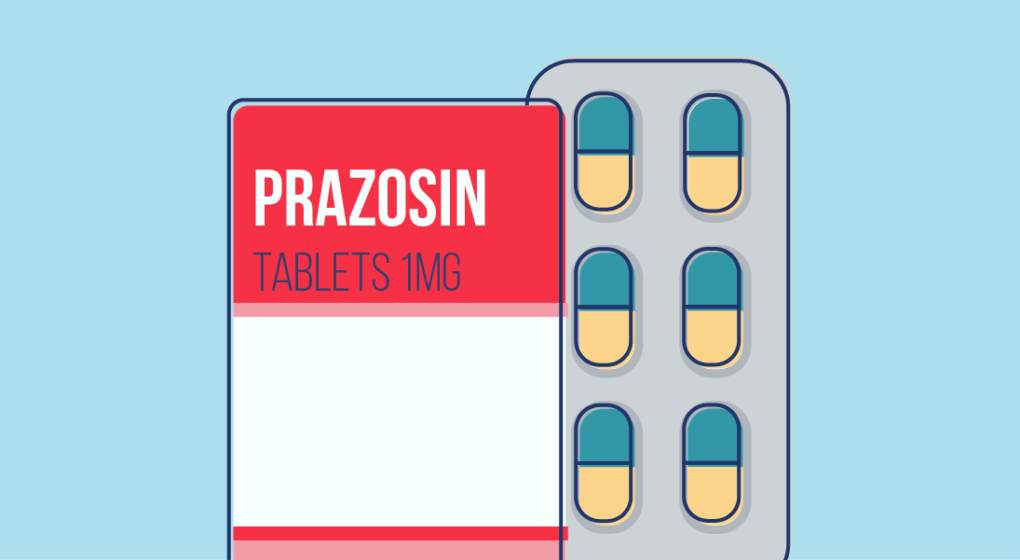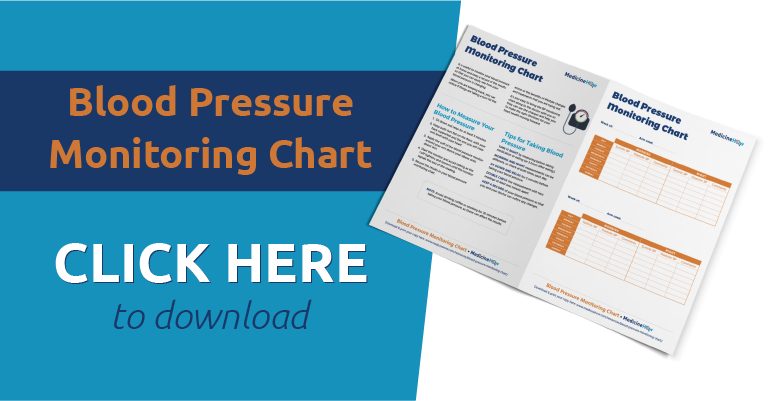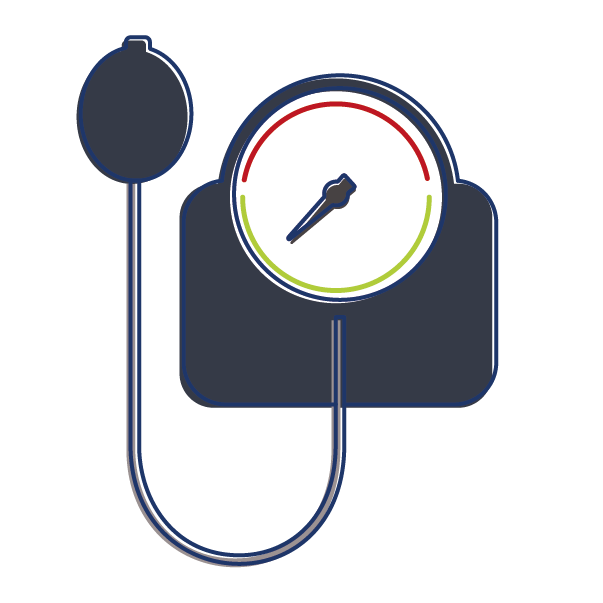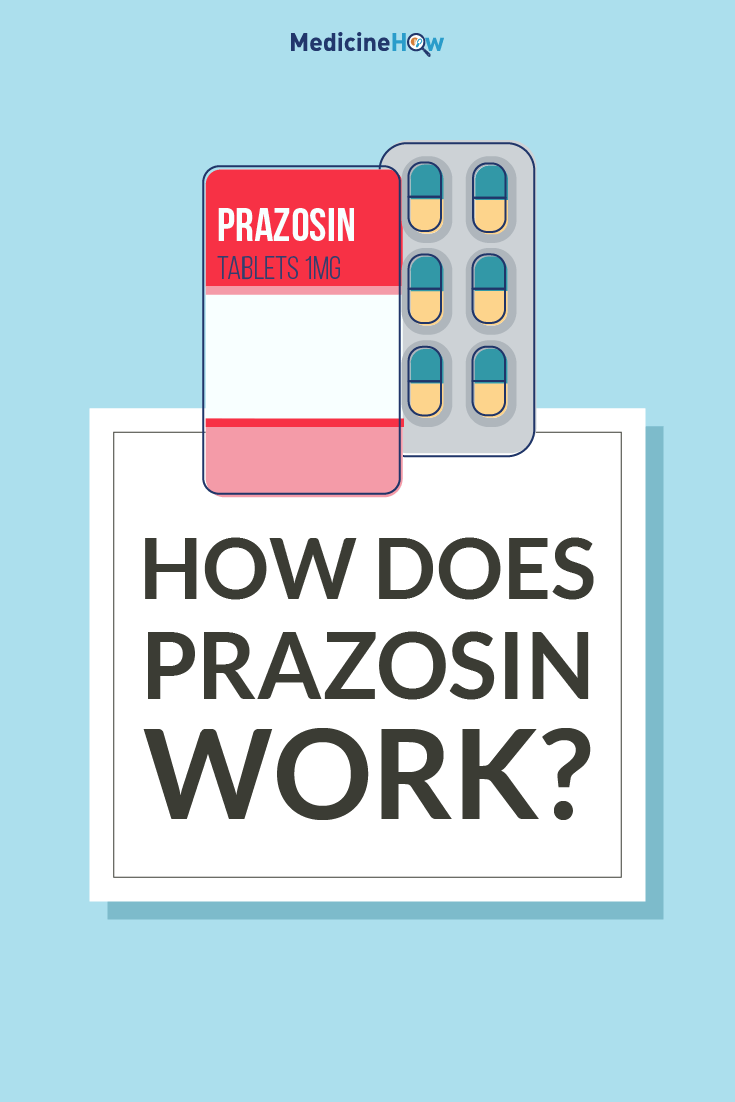
Prazosin is a type of drug called a selective alpha blocker that works by blocking alpha receptors in the body so that the neurotransmitter noradrenaline can’t activate it as usual. This causes the smooth muscles surrounding the blood vessels to relax and allow the blood to pass through more easily. Because of this, prazosin can be used to lower blood pressure and manage hypertension. It can also be used in the treatment of benign prostatic hypertrophy (BPH).

Brand Names and Doses
Prazosin is the name of the active ingredient that works the effect of the medication in the body – the generic name. You might recognise it better by the brand name, Minipress, which contain prazosin.
Minipress is available in three different doses: 1 mg, 2 mg or 5 mg.![]()
Most people start with a low dose of prazosin, such as half of a 1 mg tablet twice a day, once in the morning and once at night. This let’s your body slowly get used to the effects of the drug and reduces the risk of side effects, such as low blood pressure. Over the next few weeks, as your body adjusts to taking the drug, the dose can slowly be increased until the blood pressure is well managed, to a maximum dose of 20 mg in one day.
Prazosin is metabolised in your liver and excreted from your body very quickly. In fact, half of the dose is removed from your body within three hours of taking a tablet. As we need prazosin to have a constant effect on the body to manage blood pressure, we need to take several doses throughout the day to top up the concentration in the body and make sure it is always working.
What type of drug is it?
Prazosin is a type of medication called a selective alpha blocker, which is a class of drugs that work in a similar way. Another example of an alpha blocker drug is Terazosin.
Prazosin is unique because it has a very short half life and half of the drug is excreted from your body within 3 hours of having a dose. This is why you will need to take several doses throughout the day.
How does prazosin work?
Alpha1-adrenergic receptors are present in various places around your body. Usually, when a neurotransmitter called noradrenaline attaches to the receptor, it becomes activated and tells the surrounding smooth muscles to contract.
Prazosin attaches to the alpha1-adrenergic receptors to block the noradrenaline from activating the receptor so that the smooth muscles can’t contract like they usually do.
There are smooth muscles around the blood vessels in the body that help to regulate the pressure of the blood. When they contract the blood vessel become smaller and the blood pressure goes up; when they relax the blood vessels expand and the blood pressure goes down.
When you take prazosin, the muscles around the blood vessels aren’t able to contract as much as usual, so they get bigger and allow the blood to pass through more easily, lowering the blood pressure.
Prazosin also has an effect on other alpha-receptors in the body, such as those in the bladder. This can lead to side effects, such as urinary incontinence.
 What is prazosin used for?
What is prazosin used for?
Prazosin can be used to manage hypertension or benign prostatic hyperplasia (BPH).
It is useful in the treatment of hypertension because of the way the way it causes the muscles around the blood vessels to relax, allowing the vessels to expand and the blood to pass through more easily, lowering the blood pressure. It’s usually recommended after other medications for blood pressure, such as ACE inhibitors or calcium channel blockers, have not worked sufficiently because it may increase the risk of heart failure.
For BPH, prazosin can help to relax the smooth muscles in the groin region to help you urinate.
Side Effects
The most common side effect of prazosin is postural hypotension, which involves a sudden decrease in blood pressure when you stand up. This is more likely at the beginning of treatment for people who are elderly, have depleted fluid stores or are taking diuretic.
Some people may also notice signs of blood pressure that is too low, such as:![]()
- Headache
- Tiredness
- Dizziness
- Flushing
Often when this happens, the dose is simply too high and lowering the dose can help to get your blood pressure back into the normal range so that you feel better. It’s important to start taking with a low dose of prazosin and gradually increase it to allow your body to get used to the drug and reduce the risk of this happening.
Some people may also notice some incontinence or leakage of urine when they take prazosin. This happens because the smooth muscles in the neck of the bladder also become more relaxed and may allow some urine to escape from the bladder when you laugh or cough.
There are several situations when prazosin is not likely to be the best choice of drug for you, which are covered in more detail below:
Heart Failure
Prazosin should not be used if you have heart failure due to mechanical damage of the heart, such as aortic stenosis, because it may worsen the condition
High Risk of Orthostatic Hypotension
Some individuals are more likely to be affected by orthostatic hypotension when taking prazosin. This includes elderly people, people with fluid volume depletion and those taking diuretic medications. If you fit into one of these categories, prazosin may not be the best choice for you and you should monitor for signs of side effects.
Cataract Surgery
If there is a possibility that you may need cataract surgery in the future, you should avoid taking prazosin. This is because there is an increased risk of intra-operative floppy iris syndrome, even if you stop taking the drug before the surgery.
Stress Incontinence
If you suffer from stress incontinence, prazosin is likely to worsen symptoms of this condition because of the effect that the drug has on the muscles that help to contain urine inside the bladder.

Pregnancy and Breastfeeding
Prazosin is not recommended to be used in the first trimester of pregnancy but may be used with caution later in the pregnancy to manage high blood pressure if other treatments have not worked sufficiently.
If you are breastfeeding, you can take prazosin with caution but there is limited research to confirm that it is entirely safe.
Pin it!


